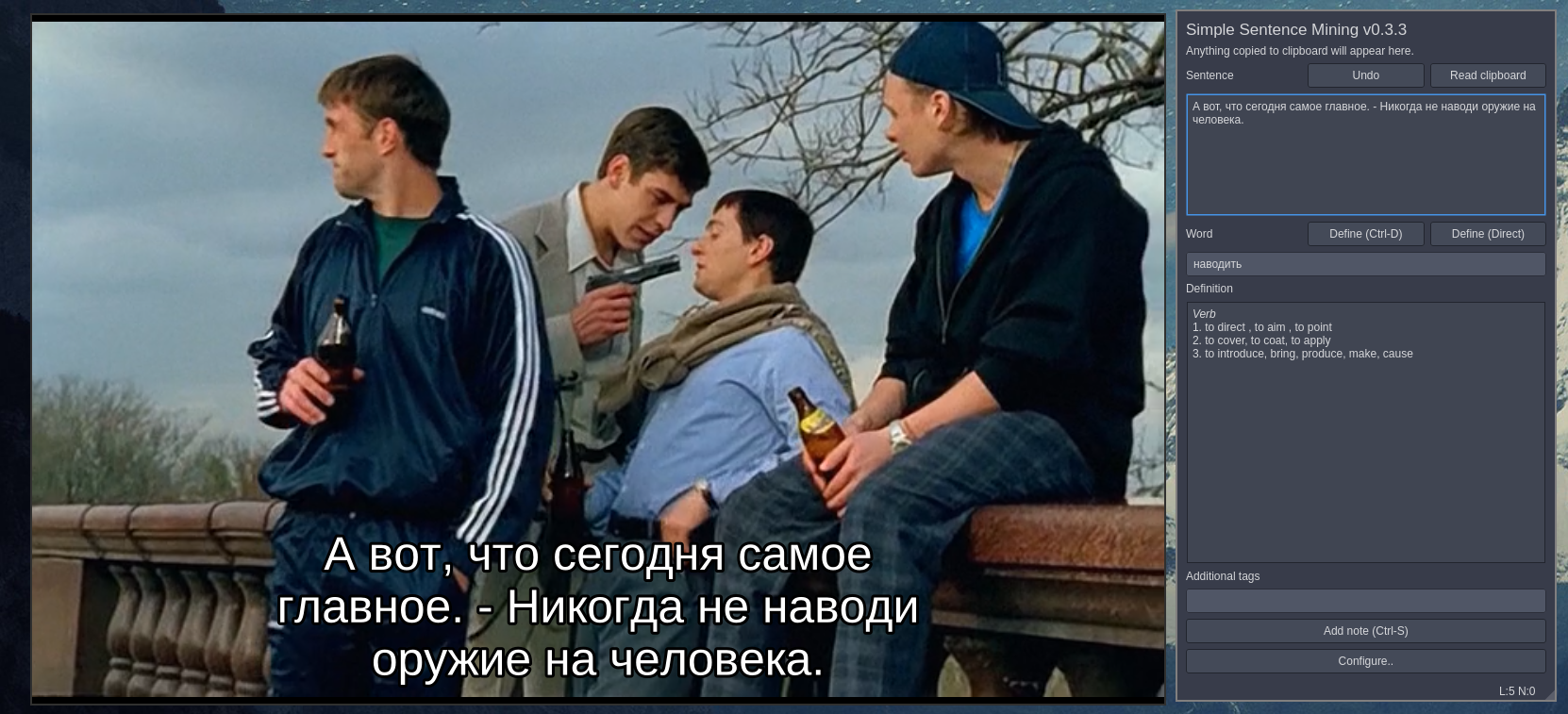Mpvacious is an addon for the mpv video player. Mpv is a free, keyboard-driven and highly extensible, which makes it particularly suitable for language learning.
Mpvacious facilitates making Anki notes from subtitled videos. While it supports adding notes directly, in this post we will use SSM to actually add the cards, then use mpvacious to add the screenshot and audio afterwards.
Prerequisites
You need a functional copy of ssmtool, Anki, and AnkiConnect running on your computer. If you don’t, you can refer to this post for a guide to set all of them up.
You also need to install mpv. On GNU/Linux, you should simply install it from your distribution’s repositories. On Windows and macOS, install it from the links on the mpv website.
Installation of mpvacious
To install mpvacious, you should clone its repository.
If you don’t know how to do this, click on the green “Code” button and choose “Download ZIP”.
Either way, the contents of the repository should go to the following directory.
- GNU/Linux:
~/.config/mpv/scripts/ - Windows:
C:/Users/Username/AppData/Roaming/mpv/scripts/
Configuration
Open the following file, which may or may not already exist:
- GNU/Linux:
~/.config/mpv/script-opts/subs2srs.conf - Windows:
~/.config/mpv/script-opts/subs2srs.conf
Then, paste in the content in this link. You should edit the file according to your deck setup. Most of these options do not have to be changed, but a few would be necessary for most people.
Pay attention to the following:
deck_nameName of your deckmodel_nameName of your note typeaudio_fieldName of the field to add audio toimage_fieldName of the field to add screenshot tonuke_spacesSet this to no if the language you study use spaces.autoclipSet this to yes so that the auto-copying feature is on by defaultsnapshot_heightChange this if you want a bigger image
Usage
 Open any video with mpv. If you have set
Open any video with mpv. If you have set autoclip to yes, you can skip
this, but if not, you should press Ctrl-t to toggle the automatic copying
feature.
Then, open a window of ssmtool by the side, scale it to fit your need. You should notice that each new subtitle appears on the top field of ssmtool. Whenever there is a word you want to make a card for, pause the video and look it up by double-clicking on the word.
After you’re satisfied with the definition, press Add Note in ssmtool, and switch back to mpv and press Ctrl-m to add screenshot and audio to the note you just added. This should open a Anki Browser window, which you can use to preview the new note.
This is all you need for now, if you have well-timed subtitles. Mpvacious offers many more features, which you can read about here.
In the future, I might attempt to add features to further integrate ssmtool and mpvacious, such as by transmitting the audio and screenshot to the clipboard directly and avoid the need to update the note afterwards.